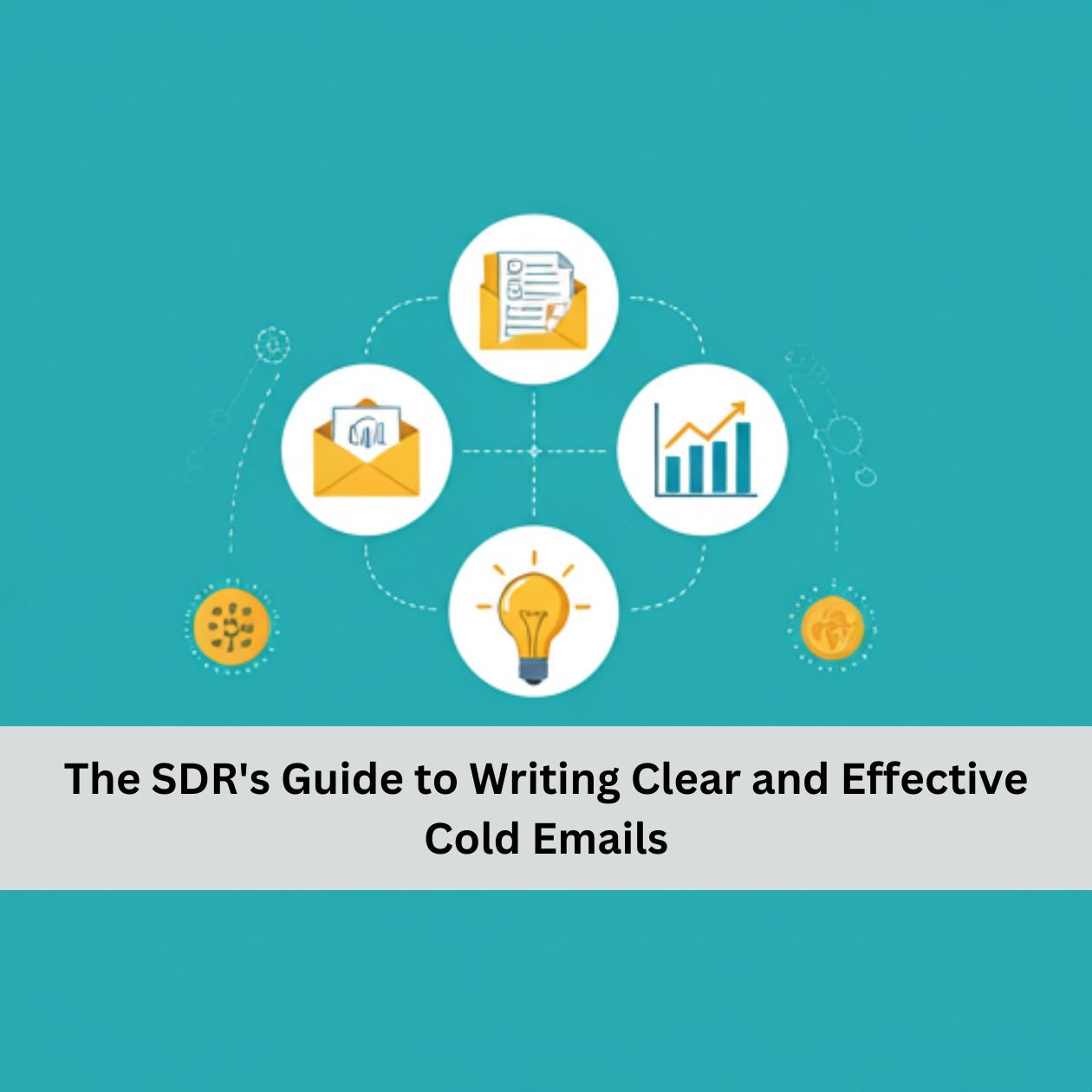Effective communication is key to sales development success. As a Sales Development Representative (SDR), your ability to connect with prospects, capture their attention, and navigate objections is crucial to achieving your quota. But in today's fast-paced digital world, clear and human-centered communication can be the differentiator. Enter the Speak Human Framework, a communication model designed to help SDRs build trust, foster engagement, and ultimately close more deals. Let's explore how this framework can transform your SDR approach.
The Case for Sales Development
Sales development is often the unsung hero of a company’s revenue engine. It’s the first step in the sales funnel where leads are nurtured, engaged, and qualified before they are passed to sales teams. Understanding why sales development is critical is foundational to improving communication.
1. Connecting with Prospects Requires Time and Resources
Getting the attention of prospects isn’t easy. According to demand generation firm Vorsight, it takes an average of 12.73 dials to connect when calling a list of prospects with direct phone numbers. That number increases when you’re reaching out through switchboard numbers. Moreover, research shows that the dials to conversation ratio is typically 22.5 dials to one meaningful conversation, and for high-demand divisions like IT or marketing, the number can rise to 30 dials for a single conversation. This is where efficient communication matters—SDRs need to maximize every interaction.
2. A Fast, Standardized Lead Follow-Up Process is Key to Conversion
Studies have shown that it typically takes 12 or more touches to engage an individual prospect, and a substantial 70% of buyers prefer to engage digitally. This means a combination of phone calls, emails, and social touches is necessary for an effective outreach strategy. Without efficient follow-up, leads slip away, which emphasizes the importance of a quick and consistent approach. Incorporating a multi-channel strategy and refining communication can significantly improve conversion rates.
3. Converting a Lead to an Opportunity Needs Its Own Playbook
Sales development is fundamentally different from the rest of the sales cycle. SDRs have a narrow window to generate interest, handle objections, and secure meetings. With clear, human communication strategies, SDRs can overcome common hurdles like skepticism and hesitation—key barriers to securing a meeting. Training, coaching, and standardized messaging help streamline this process.
4. A Well-Managed Sales Development Team Increases Conversion Rates
Having a dedicated SDR team improves conversion rates by systematically qualifying leads before passing them to sales. In fact, companies with optimized SDR teams see conversion rates up to 40%, compared to less than 5% when leads are passed directly to sales reps. This highlights the importance of focused, effective communication at the SDR level.
5. Marketing and Contact Data is Vastly Improved with Sales Development
Sales development teams spend all day in CRM tools, ensuring accurate and up-to-date contact data. Proper communication and information-sharing between SDRs and marketing teams lead to more efficient campaigns and better targeting.
6. Sales and Marketing Alignment Through Effective Communication
Marketing teams often complain that sales isn’t following up on leads, while sales reps feel marketing is delivering low-quality prospects. SDRs play a critical role in aligning these two departments, ensuring that only qualified leads are passed to the sales team. By fostering clear communication between teams, the SDR function bridges this gap and optimizes lead hand-off processes.
7. Increased Productivity and Efficiency from SDRs Leads to More Revenue
When sales reps are freed from the task of chasing unqualified leads, they can focus on closing deals. By ensuring that only qualified leads are passed to the sales team, SDRs allow sales reps to focus on the aspects of the sales process that truly drive revenue.
8. Your Buyer Wants You to Follow Up—But With Care
It’s not uncommon for buyers to express frustration over the lack of follow-up from sales reps. However, the problem often lies in the fact that the follow-up was unremarkable or insufficient. Clear, persistent, and well-crafted communication shows the buyer that you understand their pain points and are genuinely interested in providing value.
Building an Effective SDR Team
The first step in designing an SDR function is defining what a qualified lead looks like. This requires close collaboration with marketing to ensure alignment on demographic qualifiers, including company size, industry, geography, and contact roles. Additionally, behavioral qualifiers—such as willingness to meet, timing, need, and budget—help determine if the lead is ready for the next stage in the sales process.
Key SDR Team Structure Considerations:
Number of SDRs: A typical SDR to sales rep ratio is 1:3. Balancing the number of leads per SDR ensures that your team is efficient and effective without being overwhelmed.
Lead Assignment: Determine how leads are assigned to SDRs. Some models include random assignment, first-come/first-serve, or pairing SDRs with specific sales reps based on territory or buyer persona.
Management: A dedicated sales development manager is essential as your team grows. This individual should be skilled in coaching and overseeing the day-to-day operations of the SDR team.
Sales Development Ownership: Many companies choose to have marketing own the sales development function to ensure the highest-quality leads. This alignment fosters a more cohesive strategy for lead nurturing and conversion.
Training, Coaching, and Development
Training SDRs is crucial to their success. Focus areas should include:
Buyer Personas and Experience: SDRs should understand who they’re selling to and how those buyers make decisions.
Situational Plays: Provide SDRs with scripts for various buyer scenarios, including how to handle objections and generate interest in a short time.
Communication Techniques: From voicemails to emails to live calls, SDRs should be trained on clear and concise messaging tailored to each interaction.
Technology and Automation: Equip SDRs with the tools they need to streamline communication and increase efficiency.
Training should be ongoing, with regular coaching sessions and call monitoring to ensure continuous improvement.
Why the Speak Human Framework Matters
The Speak Human Framework emphasizes a buyer-first approach, where SDRs focus on engaging prospects in a conversational, approachable manner. Instead of relying solely on automated emails or robotic sales scripts, SDRs should focus on active listening and personalized messaging. Here are a few key components:
Authenticity: Ensure every message feels personal and tailored to the individual.
Simplicity: Avoid jargon and over-complicated sales pitches—speak in a way that resonates with the prospect.
Empathy: Understand the prospect's pain points and communicate how your solution can help in a clear, human way.
Conclusion
Effective communication is the backbone of successful sales development. By implementing the Speak Human Framework, your SDR team can create authentic, engaging conversations that drive higher conversion rates and foster better relationships with prospects.
If you’re looking for an expert guide to accelerate your SDR success, SchoolOfSDR is here to help. With comprehensive training, coaching, and tools, SchoolOfSDR helps SDRs hone their skills and achieve better results. Ready to elevate your communication game? Reach out today and take the next step toward mastering the art of sales development.
FAQs
1. What is the Speak Human Framework?
The Speak Human Framework is a communication strategy designed to help SDRs connect with prospects authentically and effectively, focusing on simplicity, empathy, and authenticity.
2. Why is sales development important?
Sales development is crucial because it qualifies leads, nurtures prospects, and hands over qualified opportunities to sales teams, optimizing revenue growth.
3. How much effort does it take to connect with a prospect?
It typically takes 12.73 dials to connect with a prospect using direct phone numbers and more to engage highly solicited divisions like IT or marketing.
4. What is a qualified lead in sales development?
A qualified lead meets specific demographic and behavioral criteria, including company size, contact role, and willingness to engage with sales.
5. How can an SDR team improve lead conversion rates?
By focusing on effective communication, lead qualification, and using multi-channel strategies (phone, email, social media), SDRs increase the likelihood of converting leads to opportunities.
6. What is the role of training in SDR success?
Training equips SDRs with the skills to engage prospects, handle objections, and navigate different buyer scenarios to increase conversion rates.
7. What is the ideal SDR to sales rep ratio?
An optimal ratio is 1 SDR for every 3 sales reps, but it may vary depending on your company’s needs.
8. How do I improve sales and marketing alignment?
By having SDRs serve as a bridge, ensuring that only qualified leads are passed to sales, and fostering ongoing communication between sales and marketing teams.
9. What are operational and strategic metrics for SDRs?
Operational metrics include call-to-connect ratios, email open rates, and lead source effectiveness. Strategic metrics track pipeline contribution and closed business sourced by SDRs.
10. Why should I use technology in sales development?
Technology and automation streamline communication, increase efficiency, and help SDRs track leads more effectively, improving overall performance.
stay in the loop



